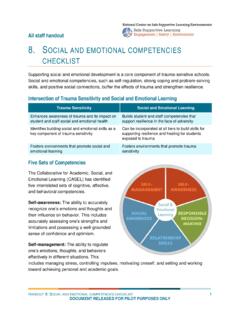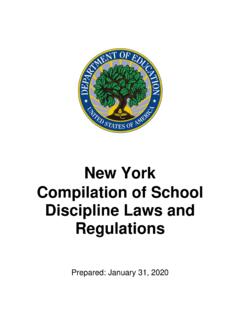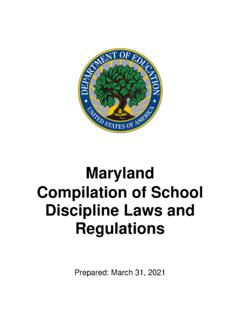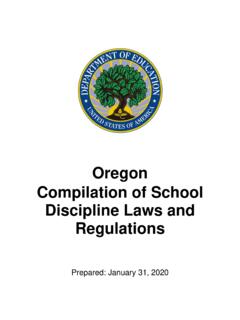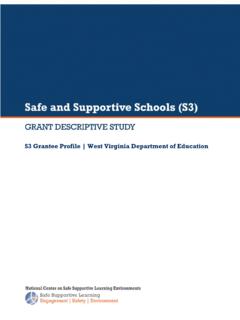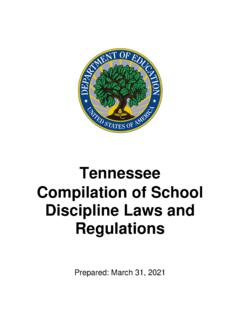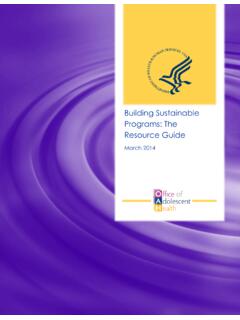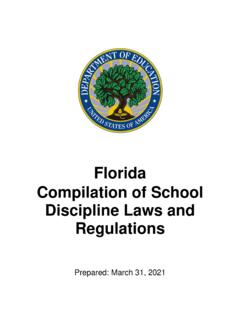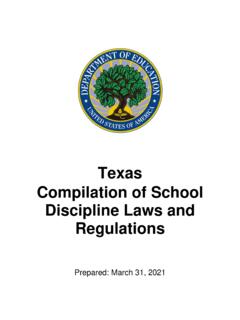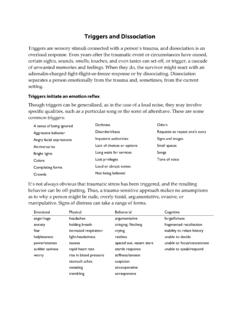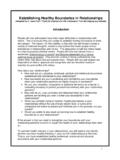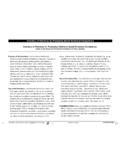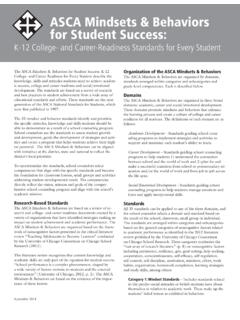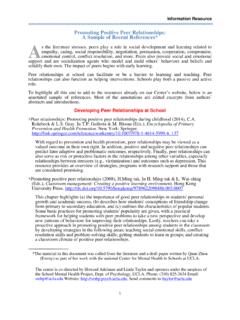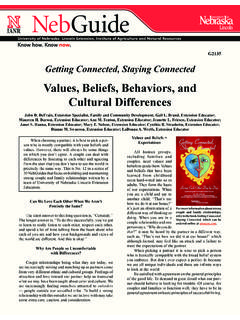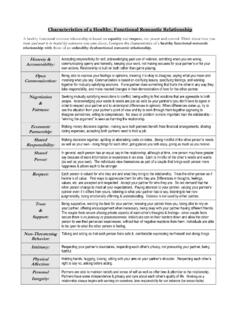Transcription of Establishing Supportive Relationships Between Teachers ...
1 Establishing Supportive Relationships Between Teachers , Staff, and Students Clay Roberts, , Senior Trainer, Vision Training Associates David Osher, , Principal Investigator, SSSTA. The Safe and Supportive Schools Technical Assistance Center Funded by the Department of Education's Office of Safe and Drug-Free Schools. Provides training and support to states, including 11 Safe and Supportive Schools grantees and other state administrators;. administrators of districts and schools; Teachers ; support staff at schools; communities and families; and students.
2 Goal is to improve school's conditions for learning through measurement and program implementation, so that all students have the opportunity to realize academic success in safe and Supportive environments. *The content of this presentation was prepared under a contract from the Department of Education, Office of Safe and Drug-Free Schools to the American Institutes for Research (AIR). This presentation does not necessarily represent the policy or views of the Department of Education, nor do they imply endorsement by the Department of Education.
3 Polling Question #2. Which of the following best describes the primary reason you chose to participate in today's session? You are gathering practical information and strategies you'll be teaching to, or sharing with, colleagues or subordinates. You are interested in gaining new skills and strategies for your own professional use. Both of the above. Page 3. School Experiences Which Contribute to a Healthy School Climate and Academic Achievement Connection Safety Positive Relationships With Adults And Peers Caring Interactions tion Academic Challenges tec Academic Support Pro Academic Engagement Positive Role Modeling Social Emotional Learning Positive Behavioral Supports Access to Needed Services And Supports Objectives 1 Review the research on relationship building in schools 2 Provide a model for deepening Relationships Provide ten promising strategies from the field
4 For 3 building Supportive Relationships with students Page 5. Details of Objective 3. Individual Strategies 1 Encourage staff to express care 2 Equip staff to provide effective feedback 3 Encourage staff to develop relationship plans Page 6. Details of Objective 3 (cont.). Organizational Strategies Engage students in staffing and other classroom and school 4 decisions 5 Adapt scheduling and structure to facilitate Relationships 6 Establish staff norms 7 Launch a social marketing campaign 8 Use staff meetings to shift the culture and expectations 9 Recognize staff for emphasizing quality Relationships 10 Develop staff-student mentoring models Page 7.
5 Research on Establishing Relationships in Schools Why Are Relationships Important? They increase academic achievement. Research Students who feel connected to school are More likely to attend school Model More likely to stay in school longer More likely to have higher grades and test scores Students with feelings of closeness with their teacher have Strategies Individual been shown to Work harder in school Spend more time on homework Organizational Strategies Receive better grades Have more confidence in their academic abilities Page 9 | Citations: 2, 5, 7, 14, 16, 17, 18, 19.
6 Why Are Relationships Important? They decrease high-risk behaviors. Research Students who feel connected to schools are Less likely to smoke cigarettes Model Less likely to drink alcohol Less likely to have sexual intercourse Less likely to have emotional problems Strategies Individual Less likely to experience suicidal thoughts or attempts Organizational Strategies Page 10 | Citations: 2, 11, 18, 19. Why Are Relationships Important? They make schools safer. Research Students who feel connected to schools are Less likely to carry weapons Less likely to become involved in violence Model Less likely to be involved in dangerous activities Strategies Individual Organizational Strategies Page 11 | Citations: 2, 11, 19.
7 Who Can Build Relationships ? Certificated staff Research Classified staff Students Community and Families Model Strategies Individual Organizational Strategies Page 12 | Citations: 16, 18. Model for Establishing Relationships in Schools Developing Supportive Relationships Levels of Relationships and influence: Research Level 1 - Inviting a relationship Basic positive social interaction Level 2 Nurturing the relationship and building trust Taking a personal interest in the student Model Demonstrating respect and empathy Understanding needs Treating students fairly Identifying and encouraging gifts and talents Strategies Individual Level 3 Leveraging the relationship Challenging them Mentoring them Maintaining contact Organizational Strategies Page 14 | Citations: 1, 10.
8 Establishing Individual Relationships in Schools Some things to Consider Your attitude and beliefs Research Cultural competence and responsiveness Students needs and experiences Model The specific situation Strategies Individual Organizational Strategies Page 16. Strategy # 1. Encourage staff to express care. Research Nonverbal messages a smile, a nod, a thumbs up, a high five, a pat on the back Affirming people Model verbally and in writing Giving your time Going beyond peoples' expectations Strategies Individual a gift, a card, attending their game or performance, helping them with a problem Telling people that you care about them as a person and about their academic success Organizational Strategies Using humor and playing together.
9 Page 17 | Citations: 1, 5, 16, 17. Strategy # 2. Equip staff to provide effective feedback. Research Pay attention (don't ignore). Be kind (no putdowns). Model Focus on Positives (three positives for every correction). Redirect inappropriate behavior Strategies Individual Organizational Strategies Page 18 | Citations: 1, 16, 17. Redirecting Inappropriate behavior Be calm. Research Take them aside. Express your feelings and identify the inappropriate behavior . , I was surprised when you I was worried when you . Indicate that the behavior is not like them.
10 Model , I often see you I know you are capable of . Ask what happened. Say that you understand but the behavior was inappropriate. , I understand how that could make you mad, but what you did Strategies Individual was . Identify and model an appropriate alternative. , Can you show me? would you like me to show you? . State the consequences. If this is a repeat behavior Organizational Strategies Thank them for listening. Page 19. Strategy # 3. Encourage staff to develop a relationship plan. Research Is there any damage I need to repair?
